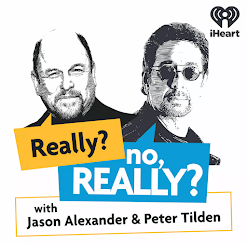At MoMA seeing Susan Kare’s iconography- reminds me of @stevesilberman’s wonderful essay https://t.co/aTyi414NIc pic.twitter.com/Dk5WoICmw2— simon frantz (@simon_frantz) January 27, 2018
Thanks to spotting a tweet from @simon_frantz I have just caught up with a brilliant article @stevesilberman wrote in 2012 celebrating the design work of Susan Kare. She was called in to work with Apple to create the icons and images that would help users find their way around a Mac's graphical user interface (GUI). She bought herself a pad of plain gridded paper and drew some images - each square a pixel - creating literally iconic designs that embedded themselves into our consciousness. Mouse pointers (hands), dustbins ('trash'), smiling Macs. I read the article with little gasps of delight, and recognition.
This also made me think about another lovely article on graphic design written by Dean Vipond a couple of years ago. He's a graphic designer who had to tweak a presentation he was giving to primary school children when he discovered they were reception class age (4-5) rather than 9/10. His beautiful essay "Explaining graphic design to four year olds" on how he distilled his work as a graphic designer into a talk that is wholly relatable to small children is wonderful and elicited the same gasps of delight and enthusiastic Twitter sharing as Steve's article will - when more people are awake
How to explain what graphic design is to four-year-olds https://t.co/6ST2j1wnWY pic.twitter.com/UyLfsCpX1C— TAXI (@designtaxi) December 27, 2016
Explaining graphic design to four-year-olds https://t.co/hsbp9BW1H7 I loved this article! :) #design #graphicdesign pic.twitter.com/tcX33spvVy— Ines Anić (@i_anic) July 15, 2016
It also reminded me of a tweet from @Pmarber (Patrick) I remember seeing in passing and making a note of so that I could go to the exhibition at the Jewish Museum (which is on until April 2018). It highlights the work of émigré designers one of whom is his cousin, Romek Marber, who created the layout for Penguin books according to the 'Marber grid'. Coincidentally the day of writing this blog post is also the Holocaust Memorial Day and on Googling Romek Marber I discovered that he had written a book about his own escape from the Nazis: "No Return: Journeys in the Holocaust". On further searching I found a really interesting archived review of his book from the Eye magazine (whose tweets about another unrelated event are below).
My cousin Romek is in this show #marbergrid https://t.co/dklHkFucS4— patrick marber (@Pmarber) November 8, 2017
And, slightly different, but also a fun read / view - graphic designers take their most useless client feedback and turn it into these fantastic posters. This series of posters was exhibited in a café in Ireland and A3 copies were sold, raising money for a local hospital.
Worst Client Comments Turned Into Posters.http://t.co/HDNnxvtCLx#graphicdesign #graphics #poster pic.twitter.com/MXoIs0wJl2— UBERKREATIVE (@UBERKREATIVE) May 21, 2015
Worst client comments for graphic designers, here's just one, makes me giggle every time…#design #magicwand pic.twitter.com/afClonek6a— DogtagCreative (@DogtagCreative) March 3, 2014
A lovely evening out with my friend Scott at St Bride's was for one of their TypeTuesdays, celebrating typefaces and all things font. This particular one was on trains 'Trains and fonts and double arrows' and it was GREAT. Or fontastic, sorry. See more tweets about this below to give a flavour.
It's *amazing*. Digging into minutiae of railway typeface (locomotive plates, branding etc). Good-humoured nerdy fun https://t.co/XNYQPerc0L— Jo Brodie (@JoBrodie) November 22, 2016
Bonus inexplicable design
I remember the original Foyles bookshop on Charing Cross Road. They had a peculiar system in place that must have made sense to someone, though not to shoppers. Foyles "retained the extraordinary Moscow-style triple queueing system: customers had to line up to receive a chit, then again to pay at an Edwardian-style till, then once more to collect the book from where they had started." (quote from FT). They also had single-width escalators which I loved.
Vapiano is a German chain of restaurants which serves delicious Italian food. You queue to get your food which is prepared in front of you, then sit and eat it. This system does not work well if you are with one other friend and you want to secure a table. One of you has to stay and stop your stuff getting pinched while the other queues, then swap - the result is that you both have a delicious meal about 10 minutes apart. If I ever go there again (the food was nice) I'll either go by myself and take pot luck or gather together a posse of chums to offset the delayed serving times. Reviews of the restaurant (while praising the excellent food) tend to use the word 'weird' a lot.
Trains and fonts and double arrows - St Bride's Foundation, 22 Nov 2016
A wonderful evening, informative, friendly and insightful. Showed design influenced by the practical, political, contextual and cultural. https://t.co/QrOqL3thb7— Scott Keir (@scottkeir) November 22, 2016
— Eye magazine (@eyemagazine) November 22, 2016
More trains: type, punches and letters. #TypeTuesday pic.twitter.com/Z1XFj8J1Ps— Eye magazine (@eyemagazine) November 22, 2016
Martha Fleming on Allan Fleming’s celebrated ‘CN’ identity, 1959-60 & its manual.— Eye magazine (@eyemagazine) November 22, 2016
‘No variation is permissible.’ #TypeTuesday #Trains pic.twitter.com/zrNwXPlNTb
Fantastically geeky @eyemagazine #typetuesday trains edition; Martha Fleming taking us through her father Allan's work for Canadian National pic.twitter.com/QgVLUa2N5M— smallfury (@weareSMALLFURY) November 22, 2016
Entertaining and honest talk by @Theo_Inglis tonight revealing the design process behind his new book #trains #TypeTuesday pic.twitter.com/soj613aOQk— Patrick Myles (@Patrick_Myles) November 22, 2016




